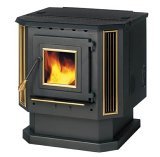A quick bit of home maintenance this fall can prevent the headache of ice dams this winter. For more information about Maine homeowners insurance, call Noyes Hall & Allen at 207-799-5541.
A quick bit of home maintenance this fall can prevent the headache of ice dams this winter. For more information about Maine homeowners insurance, call Noyes Hall & Allen at 207-799-5541.
Pellet stoves are hot. Over 50% of stoves bought in the U.S. in 2008 were pellet-fueled, according to the Pellet Fuels Institute.
 Any kind of wood-burning appliance causes concern for fire insurance companies. Insurers are often slow to adapt to new technology, since they rely on experience statistics to help them set rates and underwriting guidelines. However, most insurers understand the popularity of these stoves, and are trying to accomodate home owners who use them.
Any kind of wood-burning appliance causes concern for fire insurance companies. Insurers are often slow to adapt to new technology, since they rely on experience statistics to help them set rates and underwriting guidelines. However, most insurers understand the popularity of these stoves, and are trying to accomodate home owners who use them.
Operated and maintained properly, well-built stoves can be a safe, economical way to heat your home. If you buy one, your insurance company will probably ask some questions about it. Here are some of the insurance company guidelines we’ve seen.
5 Keys to Making Your Pellet Stove Insurable
It’s always smart to ask your agent or insurance company before installing a wood-burning appliance. If you have any questions, contact Noyes Hall & Allen Insurance .